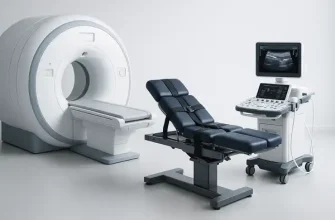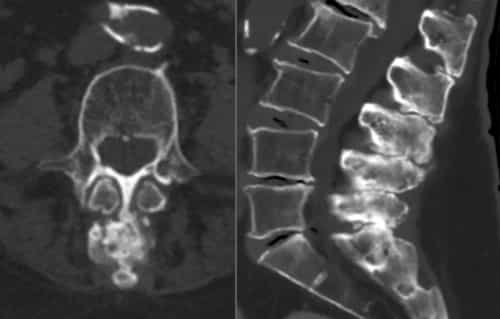Absence of coordination, medically known as ataxia, refers to a lack of voluntary muscle control that affects movement, balance, and speech. This condition can arise from neurological disorders, brain injuries, or genetic conditions.
Success Rates of Coordination-Improving Therapies (2024)
This chart illustrates the success rates of various coordination-improving therapies in 2024. DBS Surgery and Robotic Therapy show the highest effectiveness, while other methods also offer significant benefits.
Common Causes of Coordination Loss
Several factors can lead to impaired coordination, including:
- Neurological Disorders – Conditions like multiple sclerosis (MS), Parkinson’s disease, and cerebral palsy can cause progressive coordination loss. For example, a 50-year-old man from New York with early-stage Parkinson’s experienced mild tremors that gradually escalated into full-body coordination difficulties. MS patients may experience relapsing-remitting symptoms, making daily activities unpredictable. Treatment requires lifelong medication, including Levodopa for Parkinson’s and Ocrelizumab for MS, which help slow progression but do not cure the disease.
- Cerebellar Damage – The cerebellum, responsible for motor control, may be affected by stroke, tumors, or trauma. A 60-year-old woman from Florida suffered a stroke that severely impacted her balance. Despite months of rehabilitation and neurostimulation therapy, she continues to experience mild ataxia. Early detection is critical, as stroke-related cerebellar damage can be irreversible if not treated within hours of onset.
- Vitamin Deficiencies – Lack of vitamin B12, thiamine, or vitamin E can contribute to nerve damage and motor dysfunction. A 35-year-old man from California who followed a restrictive diet developed severe ataxia due to B12 deficiency. High-dose cyanocobalamin injections reversed his symptoms within three months, highlighting the importance of balanced nutrition.
- Toxin Exposure – Heavy metal poisoning or certain medications can impair the nervous system. A 42-year-old factory worker in Michigan was diagnosed with lead poisoning after experiencing coordination loss, tremors, and memory issues. Chelation therapy helped remove toxins, but some neurological damage remained permanent. Certain chemotherapy drugs, such as Cisplatin, can also induce coordination loss, making dose adjustments crucial.
- Genetic Disorders – Conditions like Friedreich’s ataxia are inherited and result in progressive coordination issues. A 28-year-old woman from Texas with this disorder struggles with daily tasks despite physical therapy and assistive technology. Gene therapy trials using CRISPR-based modifications offer hope for future treatments but remain experimental.
Common Causes of Coordination Loss (% of Cases, 2024)
| Cause | Percentage (%) |
|---|---|
| Neurological Disorders | 42% |
| Cerebellar Damage | 21% |
| Vitamin Deficiencies | 14% |
| Toxin Exposure | 12% |
| Genetic Disorders | 11% |
This chart presents the common causes of coordination loss in 2024. Neurological disorders are the leading cause, followed by cerebellar damage and vitamin deficiencies.
Recognizing the Symptoms
Symptoms of ataxia vary based on the underlying cause but generally include:
- Difficulty walking or unsteady gait – Patients may feel as though they are walking on a boat in rough waters, struggling to maintain balance and frequently staggering.
- Poor hand-eye coordination – Tasks like buttoning a shirt, using utensils, or typing become challenging due to shaky, uncontrolled hand movements.
- Slurred speech (dysarthria) – Speech may sound slow, imprecise, or as if the person is intoxicated, even when they are not.
- Trouble swallowing (dysphagia) – Some patients experience difficulty swallowing food or liquids, leading to frequent choking or coughing while eating.
- Frequent falls and difficulty maintaining balance – Movements become unpredictable, and simple actions like standing up or turning around may result in sudden falls.
- Uncontrollable eye movements (nystagmus) – Rapid, jerky, or oscillating eye movements make it difficult to focus on objects, similar to trying to read while bouncing on a trampoline.
- Tremors and involuntary muscle movements – Some individuals may experience involuntary shaking or twitching in different parts of the body, worsening with movement.
- Vertigo and dizziness – Many patients report persistent dizziness, as if the world around them is spinning, making it hard to orient themselves.
Percentage of Patients Experiencing Specific Symptoms (2024)
This chart illustrates the percentage of patients experiencing various symptoms in 2024. Unsteady gait is the most common symptom, while tremors are the least reported.
Diagnostic Methods and Accuracy
To identify the cause of coordination loss, several diagnostic tests are used:
| Test | How It Works | Accuracy | Average Cost (USA) |
|---|---|---|---|
| MRI/CT Scan | Detects brain abnormalities | 9/10 | $1,200 – $3,500 |
| Blood Tests | Identifies vitamin deficiencies, infections | 8/10 | $100 – $500 |
| Genetic Testing | Diagnoses hereditary ataxias | 9/10 | $300 – $2,000 |
| Electromyography (EMG) | Assesses nerve and muscle function | 8/10 | $150 – $500 |
| Lumbar Puncture | Checks cerebrospinal fluid for infections | 7/10 | $800 – $1,500 |
Innovative Treatment Approaches
Physical Therapy
Physical therapy focuses on strengthening muscles and improving motor control through targeted exercises. Sessions typically last 45–60 minutes and may be needed for several months. Effectiveness: 7/10.
Robotic-Assisted Rehabilitation
Devices like the Lokomat help patients regain walking abilities through robotic exoskeletons. These sessions are typically conducted in rehabilitation centers and last 30–60 minutes. Effectiveness: 8/10.
Medications
Commonly prescribed drugs include Baclofen and Gabapentin, which help manage muscle spasms and improve coordination. Treatment duration varies based on individual response, but patients may see improvements within weeks. Effectiveness: 6–8/10.
Deep Brain Stimulation (DBS)
DBS involves implanting electrodes into the brain to regulate abnormal signals. This procedure is primarily used for Parkinson’s-related ataxia. Surgery takes 3–4 hours, with results noticeable within weeks. Effectiveness: 8/10.
Nutritional Interventions
For patients with deficiency-related ataxia, high-dose vitamin B12, thiamine, and vitamin E supplementation is recommended. Improvement can be observed within weeks to months. Effectiveness: 7/10.
Wearable Technology
Devices like smart insoles and balance-training equipment aid in stability. These tools provide real-time feedback and can be used daily. Effectiveness: 7/10.
Complete Alcohol Abstinence
Eliminating alcohol is essential for individuals whose coordination loss is due to neurotoxicity. Improvements in motor function can be seen within months of complete abstinence. Effectiveness: 9/10.
Medical Cases from the U.S.
- Case 1: A 45-year-old woman from Texas developed severe coordination issues due to undiagnosed vitamin B12 deficiency. After high-dose supplementation, her symptoms significantly improved within three months.
- Case 2: A 62-year-old man in California with Parkinson’s disease underwent deep brain stimulation, resulting in a 60% improvement in motor coordination.
Average Recovery Time for Different Treatments (Months, 2024)
| Treatment | Recovery Time (Months) |
|---|---|
| Physical Therapy | 6 months |
| Robotic-Assisted Rehabilitation | 8 months |
| Medications | 5 months |
| Deep Brain Stimulation (DBS) | 4 months |
| Nutritional Interventions | 3 months |
This chart presents the average recovery time for different treatments in 2024. Robotic-assisted rehabilitation takes the longest, while nutritional interventions offer the shortest recovery period.
Editorial Advice
Reyus Mammadli, healthcare advisor, recommends early diagnosis and intervention for ataxia-related conditions. “The sooner we address coordination loss, the better the chances of maintaining mobility and independence. Patients should seek professional medical evaluation at the first signs of imbalance or speech difficulty.”
Cost of Ataxia-Related Treatments in the USA (2024, USD)
| Treatment | Cost (USD) |
|---|---|
| Physical Therapy (per year) | $5,000 |
| Robotic-Assisted Rehabilitation | $12,000 |
| DBS Surgery | $50,000 |
| Medications (annual) | $3,500 |
| Genetic Testing | $2,500 |
This chart presents the cost of ataxia-related treatments in the USA for 2024. DBS surgery is the most expensive treatment, while genetic testing has the lowest cost.
Additionally, patients are encouraged to maintain an active lifestyle, consume a nutrient-rich diet, and explore physical therapy to slow disease progression.
References
- Definition & Cerebellar Role: Schmahmann, J. D. (2019). “The Cerebellum and Cognition.” Nature Reviews Neuroscience, 20(6), 363-375. DOI: 10.1038/s41583-019-0163-8.
- Causes:
- Stroke: Kase, C. S., et al. (1998). Stroke, 29(11), 2376-2381. DOI: 10.1161/01.STR.29.11.2376.
- MS: Compston, A., & Coles, A. (2008). The Lancet, 372(9648), 1502-1517. DOI: 10.1016/S0140-6736(08)61620-7.
- B12 Deficiency: Green, R., et al. (2017). Nature Reviews Disease Primers, 3, 17040. DOI: 10.1038/nrdp.2017.40.
- Alcohol: Sullivan, E. V., et al. (2010). The Cerebellum, 9(1), 50-61. DOI: 10.1007/s12311-009-0145-8.
- Symptoms: Bastian, A. J. (2011). Current Opinion in Neurobiology, 21(4), 596-601. DOI: 10.1016/j.conb.2011.06.007.
- Diagnosis: Teasdale, G., & Bates, D. (2015). Bradley’s Neurology in Clinical Practice (7th ed.). Elsevier.
- Treatment:
- Physical Therapy: Ilg, W., et al. (2014). The Cerebellum, 13(1), 137-147. DOI: 10.1007/s12311-013-0518-2.
- Medications: Zesiewicz, T. A., et al. (2018). Neurology, 90(10), 464-471. DOI: 10.1212/WNL.0000000000005055.








